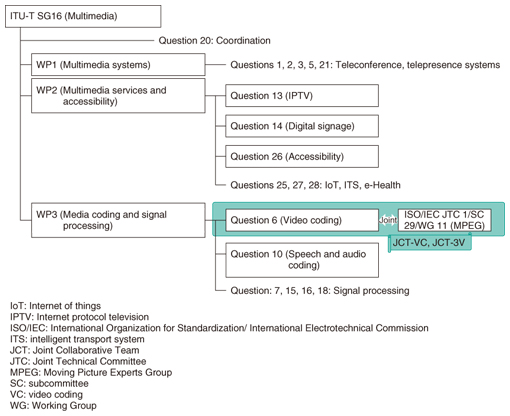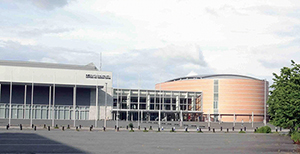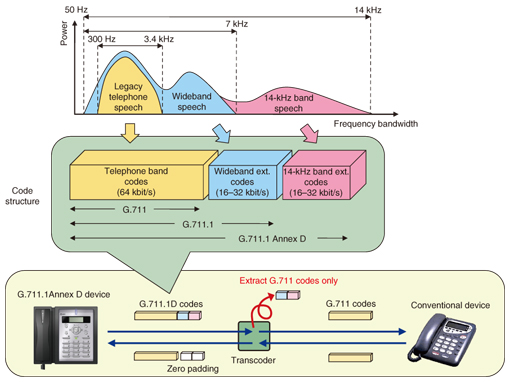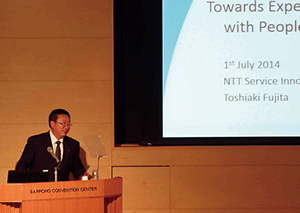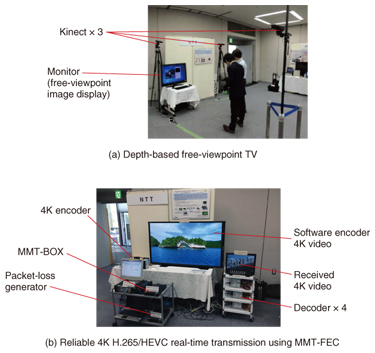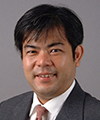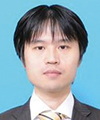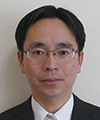 |
|||||||||||||||||||
|
|
|||||||||||||||||||
|
Global Standardization Activities Vol. 13, No. 2, pp. 34–39, Feb. 2015. https://doi.org/10.53829/ntr201502gls ITU-T SG16 Sapporo Meeting ReportAbstractThe International Telecommunication Union-Telecommunication Standardization Sector Study Group 16 (ITU-T SG16) met from June 30 to July 11, 2014 at the Sapporo Convention Center, Hokkaido, Japan. We report on the results of the SG16 Sapporo meeting and describe some side events held in conjunction with the meeting. Keywords: ITU-T meeting, multimedia, IPTV, digital signage, accessibility, audio coding, video coding 1. SG16 meeting resultsStudy Group 16 (SG16) creates ITU-T (International Telecommunication Union-Telecommunication Standardization Sector) recommendations related to multimedia, which become international standards. It is composed of three Working Parties (WPs), which are further divided into Questions for study according to research themes (Fig. 1). The Sapporo meeting was the third meeting in the current study period (2013 to 2016), and was held with 232 participants from 24 countries at the Sapporo Convention Center (Photo 1). Great progress was made at the meeting, with 67 draft recommendations consented. We report on the state of deliberation for Questions to which NTT contributed below.
1.1 IPTVJapan took a lead role in work done on recommendations for the basic Internet protocol television (IPTV) specifications, and this work has already been completed; thus, Question 13 regarding IPTV has recently been studying additional issues including smart TV such as services using multiple screens and multiple devices, and enhanced operation interfaces other than a remote control, for example, speech control, gestures, and touchscreens [1]. At this meeting, NTT also proposed a revised text with illustrations to gain a good understanding of the draft recommendation and a draft appendix explaining the use cases in order to facilitate the study of device discovery typically used in second-screen services. The technical paper HSTP.IPTV-Gloss [2], which listed terminology for IP-based TV-related multimedia services including smart TV, was also completed at this meeting and approved for publication. 1.2 Digital signageDigital signage is a new study item in ITU-T, and it was established as the new Question 14 starting with this study period. Recommendation H.780 [3], based on active Japanese contributions, was accepted in the previous study period. It is a basic recommendation for digital signage describing service requirements and IPTV-based architecture, and study on it is now advancing in the area of applied services. At this meeting, the draft recommendation for requirements of disaster information services, which Japanese companies led in proposing work items, was consented as Recommendation H.785.0 [4]. Moreover, approval of the technical paper HSTP.DS-UCIS [5] regarding use cases of interactive services was also achieved. 1.3 AccessibilityAccessibility*1 of multimedia services and systems is examined in Question 26. In this meeting, NTT collaborated in proposing two contributions regarding systems enabling persons with hearing or speech disabilities to make emergency calls. These proposals are based on the results of a study of emergency calling systems using mobile phones and smartphones for persons with hearing or speech disabilities done by the Emergency Call Accessibility Working Party (Em-Call WP) of the Telecommunication Technology Committee and lead by Emeritus Prof. Sadahiko Kano of Waseda University. The WP held discussions with participation from NTT and other telecommunications carriers as well as vendors and service providers related to emergency calling, the Fire and Disaster Management Agency, and organizations for the disabled. The contributions discussed here include specifications for information (data) required at the application layer and proposals for activities necessary to create recommendations. As a result of discussion in this meeting, it was agreed to proceed with the creation of a new work item (H.ACC-RDE) based on these proposals so that study of detailed specifications can proceed. 1.4 Speech and audio codingQuestion 10 involves the study of speech and audio coding. NTT has been working since 2007 on standardizing a 14-kHz bandwidth, super wideband (SWB) extension of the G.711.1 [6], 7-kHz bandwidth, wideband (WB) scalable audio coding, which is in turn, an extension of the 3.4-kHz bandwidth, G.711 codec used for legacy telephone speech signals. Scalable coding is based on transmission formats that add coded data (bandwidth extension codes) to data coded in an earlier format, in order to expand the audio bandwidth. The advantage of this is that it can interoperate with earlier formats without requiring re-encoding (Fig. 2). After the SWB extension was approved as G.711.1 Annex D in November 2010, standardization of a floating-point implementation (Annex E) and a stereo extension (Annex F) advanced (see Table 1). In the previous meeting, a new annex was drafted recommending an alternative floating-point implementation to Annex F, and in this meeting, NTT and Huawei Technologies contributed a report on results from an objective evaluation of interoperability between it and the fixed-point implementation. This was reviewed, and it was confirmed that there were no issues with interoperability, so it was agreed for consent. This recommendation is scheduled to be published as G.711.1 Annex G.
1.5 Video codingThe 18th meeting of the Joint Collaborative Team on Video Coding (JCT-VC), formed from the Question 6 group studying video coding (VCEG) and the ISO/IEC JTC 1/SC 29/WG 11*2 (also known as the Moving Picture Experts Group or MPEG) group, was held from June 30 to July 9, 2014. Approximately 140 people participated, and 340 contributions were input. Progress was made in deciding extended specifications for the next-generation High Efficiency Video Coding (HEVC), also called H.265 [7], and specifically, the final specification for SHVC, the scalable HEVC extension, was settled. Together with the RExt range-extension specification settled during the April meeting and the MV-HEVC extension for multi-view video settled during the July meeting, the three extension specifications will proceed to the voting stage as HEVC 2nd Edition. The Screen Content Coding (SCC) extension draft specification for artificial imagery such as PC (personal computer) screen captures was also issued. SCC performance was improved through discussion on refinements of techniques such as efficiently copying block units of images and analyzing color map data and combining colors that appear frequently in order to compress images. Deliberation on SCC will continue at the October meeting and thereafter. 2. Invitation to JapanOn November 6, 2013, the Ministry of Internal Affairs and Communications formally invited ITU-T Director Malcolm Johnson to hold the SG16 meeting in Japan, and this was accepted at the SG16 Plenary Session on the 8th of the same month. A Japanese host committee was established from the sponsoring companies to run and administer the meeting smoothly. A working group was formed to do preparation work and offer on-site support. The NTT Group, as a platinum sponsor, also participated in these committees and supported the running of the meeting. 3. Side eventsVarious meetings and events were held in conjunction with the SG16 Sapporo meeting. The workshop and exhibition planned by the Japanese host committee are outlined in this section. 3.1 WorkshopA workshop on multimedia technologies was held as a local event in conjunction with the SG16 Sapporo meeting in the afternoon of July 1, 2014. This workshop was held in cooperation with the exhibition described below, and was planned by Japanese companies hosting the SG16 meeting. The workshop consisted of technical sessions, mainly to introduce technologies shown in the exhibition, and keynote sessions by the platinum sponsors. NTT’s contribution included a keynote speech from Toshiaki Fujita, Senior Vice President of the NTT Service Innovation Laboratory Group (Photo 2), and a technical session on the roadmap for UHDTV (ultrahigh-definition television) services including 8K and H.265/HEVC encoder technology.
Professor Junichi (Jay) Kishigami from Muroran Institute of Technology, and a senior advisor at NTT, gave an invited speech entitled “Beyond the Content Distribution and Its Technology,” in which he discussed the similarities between ITU-T metadata Recommendations F.750 [8] and H.750 [9], the recent importance of metadata, and future directions related to metadata. Of the 81 participants in the workshop, 56 also participated in the SG16 meeting and the JCT-VC meeting held on the same day. 3.2 ExhibitionAn exhibition with the theme of showcasing cutting-edge multimedia technologies was held from July 1 to 4 in order to broadly promote technologies both under study and already standardized. NTT provided two demonstration exhibits entitled “Depth-based Free-viewpoint TV” and “Reliable 4K H.265/HEVC Real-time Transmission by Using MMT-FEC (MPEG media transport forward error correction)” (Fig. 3).
The former is a technology for synthesizing free-viewpoint video in real time from multi-point video and a depth map captured using multiple cameras and a depth sensor. Original synthesis technology enables synthesized display of free-viewpoint video from sparse depth data containing sensor noise in real time, without depth defects. The latter is a robust transmission technology using 4K video HEVC real-time hardware processing technology and MPEG media transport (MMT). 4K video is partitioned into quarters, encoded with four hardware encoders, and transmitted as a highly robust stream using a very robust low-density generator matrix coding provided by NTT. We received comments from many visitors. Yoko Kamikawa, Vice-Minister of Internal Affairs and Communications (at the time) visited the former exhibit and asked when the technology would be ready for practical use, and noted that it was interesting that the video could be viewed from a position where there was no camera. The latter was recognized for its ability to process 4K video in real time (by the chairman of JCT-VC and other session participants), while others expressed their desire for 8K video support. Each day, many domestic and international participants in the sessions, related technologists, and members of government and the press visited the exhibits, making them a phenomenal success. References
|
|||||||||||||||||||









